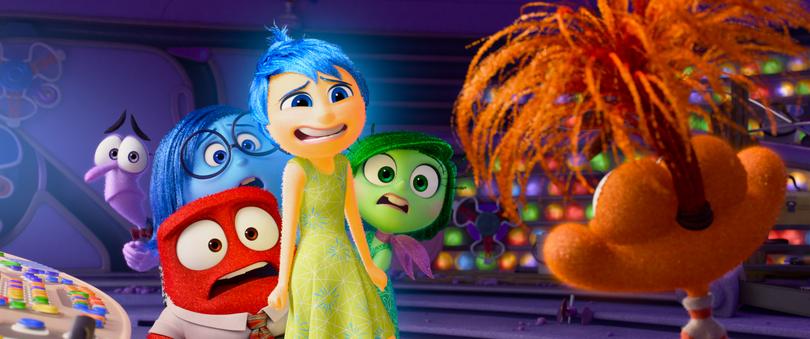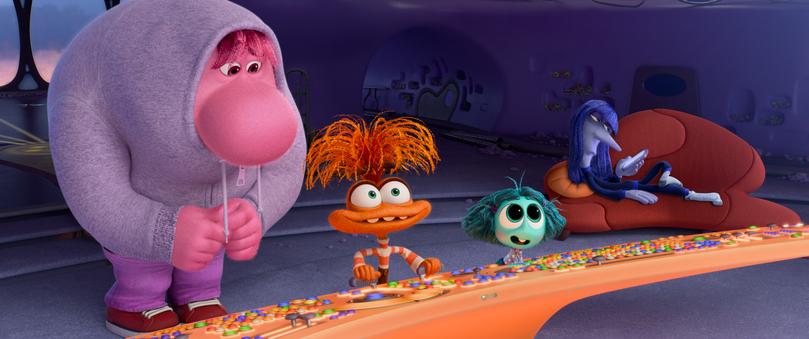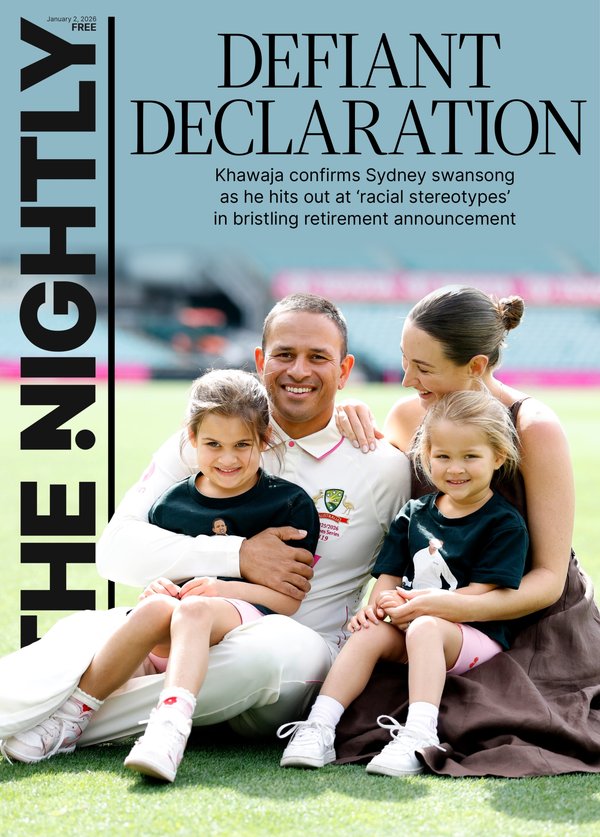Inside Out 2: Amy Poehler on what to look forward to in latest Pixar film

The moment Inside Out’s imaginary friend Bing Bong fades from Riley’s memory still makes Amy Poehler cry. Not candy tears, but regular human ones.
Pixar is renowned for making weepy messes out of adults, and Poehler is no different, nominating Up, Toy Story and Finding Nemo as the movies that have her welling up. “They all make me cry in the most satisfying way,” she told The Nightly. “But I have to say Bing Bong. Bing Bong is the best. We love Bing Bong forever.”
Perhaps there’s a little bias at work. Bing Bong is a fan favourite from Inside Out, the 2015 Pixar movie that built a beautiful little story around abstract emotions. Poehler voices Joy, the always-happy feeling that insists on making sure every moment is special for Riley, the girl whose emotions we follow.
Sign up to The Nightly's newsletters.
Get the first look at the digital newspaper, curated daily stories and breaking headlines delivered to your inbox.
By continuing you agree to our Terms and Privacy Policy.But when Inside Out came out almost nine years ago, we weren’t talking much about toxic positivity, a term that has gained traction for calling out a tendency to not acknowledge the spectrum of the human experience.

“Joy wants to make sure that every moment is rainbows and unicorns and very, very, very special.
“Her fatal flaw is that she wants things to go well and she wants to look at the bright side, and by doing it, especially in the first film, she bypasses emotions that you need to feel. And Sadness very quietly teaches her that lesson,” Poehler explained of her character, which returns next month in the sequel, Inside Out 2.
The first film was a journey for Joy to realise there’s value in holding different emotions at one time, that it can be a complement rather than conflict.
“It’s the sweet and salty of life,” Poehler, known for Parks and Recreation, Saturday Night Live and collaborations with long-time friend Tina Fey, added.
While Joy arrives at a more balanced place at the end of Inside Out, the work isn’t done. In the sequel, Riley is now 13 years old and with the onset of puberty, a raft of new emotions arrive – Anxiety, Embarrassment, Envy and Ennui – which nudges out Joy, Sadness, Anger, Fear and Disgust.
Joy, once again, goes into this mode of thinking nothing good can come from these complex new feelings, especially the bossy Anxiety, which Joy thinks is making bad decisions for Riley.
“The lesson over and over again is that life changes all the time. The only thing you can count on is that everything is going to change,” Poehler said.

Throughout Pixar’s 27-movie oeuvre, change is the constant. In Inside Out, the change is Riley’s family moves to another city, here it’s puberty and all the fun surprises that entails.
Throughout Toy Story, it’s the arrival of new characters and then Andy growing up and no longer needing them. Turning Red is another puberty story, and Up is about how to deal with grief.
It’s why Pixar movies make Poehler and everyone else cry. It’s the emotional sophistication of the stories that tap into these universal feelings we all have because we have to face change.
Inside Out 2 is coming out at a different moment than its predecessor. A lot has changed in the past nine years and audiences have been through a gamut of experiences, some joyful, some sad and many of them anxious.
Poehler agreed it has a different resonance. “It kind of dismantles everything, it throws you off your game,” she explained.
“It goes really deep and it challenges everyone to go there together. It’s the opposite of gaslighting and really takes into account the decade that we’ve had.”
Inside Out is in cinemas on June 13

